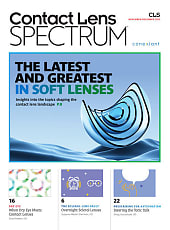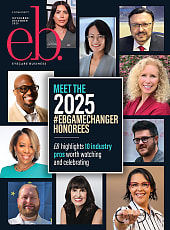Harnessing Contact Lens Search Data
New research from the Contact Lens Institute (CLI) is shedding light on how people search for contact lenses online—and what that means for eyecare professionals. The latest findings from CLI’s See Tomorrow initiative reveal that buying concerns dominate online searches, making up 65% of the top 20 search queries in the U.S. and Canada. At the same time, there’s a clear need for better patient education on contact lens removal and more discussions about switching between contacts and glasses (dual wear).

These insights come from CLI’s new study, “Digital Discovery: Consumer Searches Reveal Contact Lens Realities,” which was unveiled at Vision Expo East 2025 in Orlando. CLI’s research was conducted using Google and TikTok auto-complete data from January 2025, along with Google Trends analysis from December 2024 to January 2025. Early results highlight some key opportunities for ECPs.
Buying Contact Lenses: What Patients Are Searching For
When it comes to contact lens-related searches, purchase concerns are front and center. Half of the top 20 Google searches focus on specific retailers, making up 53.5% of search volume, and nearly 10% relate to pricing. This suggests that practices could be proactive in addressing purchase considerations before patients even get to the optical shop. Conversations about price, performance, and total cost during exams can help patients make informed decisions and prevent them from looking elsewhere for answers.
In a CLI panel presentation on these results given by 2025 CLI Visionaries at Vision Expo East, Nishan Pressley, OD, shared that ECPs should think about contact lens awareness from the patient’s perspective.
“This trend is showing that maybe our patients don’t know sometimes how to purchase contacts—especially those first-time contact lens wearers,” says Dr.
Pressley. “When they first check in, [we] let them know we are a full-service private practice. We offer glasses and contact lens ordering.”
Contact Lens Removal: A Common Struggle
Another big takeaway? People are struggling with removing their contact lenses. Online searches for help with removal outnumber those for insertion by 250% to 400%. On Google, it was the second-most-popular “how to” contact lens search (26.3% by volume), and on TikTok it ranked as both the highest and third-highest search (61.4% by volume).
The data shows that ECPs should focus more on teaching removal techniques during in-office training and follow up with patients to see if they’re having trouble. VEE CLI panel presenter Roxanne Achong-Coan, OD, suggested asking patients to remove their contact lenses during their follow-up visit to see whether they are struggling with removal.
“[This study] really helps us further identify that this is a pain point that our patients are experiencing at home,” shares Ryan Corte, OD.
Dual Wear: A Missed Opportunity?
The study also looked at how people compare contact lenses with other vision correction options. Most Google searches (94%) compare contact lenses with glasses, with very few looking at LASIK (6%). Interestingly, 80% of comparison searches use the word “or” rather than “vs” or “and,” suggesting that many consumers see it as an either/or decision rather than considering both. Given that CLI’s past research shows that 36% of patients would benefit from dual wear, ECPs may want to bring up the option more often during exams and follow-ups.
“This one really hits home because it’s such a huge opportunity for us as trusted eyecare professionals to really home in on that conversation,” says Dr. Corte. “I don’t think any of us sitting up here would recommend our patients who have contact lenses to not also have a pair of glasses.” He recommends getting the eyecare team involved in communicating to patients that their exam is for both glasses and contact lenses.
Use Search Data for Success
By understanding the key terms that patients are searching for online, ECPs can better meet patients’ needs and enhance the overall contact lens experience. CLI will roll out more information from its study in the coming months.



